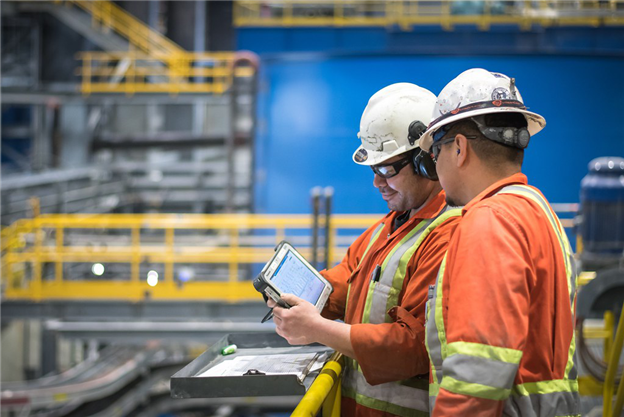Know-hows of digital for safety – a gist

Disruption in the workforces hardly remains a new phenomenon. Mechanization of manufacturing, with mass production and the advent of the internet and computers have all changed the way that work is done.
Earlier waves of industrialization primarily affect low-skilled manual labour and past improvements in technology have typically made jobs at the lower end of the skills spectrum obsolete – for example, flight navigators but not pilots, and typists but not data analysts.
There is wide acceptance that this has led to productivity improvements and higher economic growth – new jobs were generated that led to improvements in standards of living. The benefits have overwhelmingly outweighed the costs and there has never been a better time to be a human being.
Plus, the current wave is characterized by automation becoming smarter, machine-to-machine communication, artificial intelligence and continued technological improvements – with otherwise described at the fourth industrial revolution, still brings uncertainty and further threatens a broader range of occupations and skill levels.
Data analysts and pilots are no longer safe from automation and an increasing number of non-routine jobs previously thought to be in the safe category are facing obsolescence. Whereas previously lower-skilled jobs were affected, the current wave is likely to disrupt many mid-level positions.
In day to day occurrences at workplaces, managers are sometimes too busy to take notice. Their reporting, analysis and implementation pipelines are clogged up. Too many reports with information that leads nowhere, too much data sitting idle eating both mental and physical space. And finally, not much to show either, in terms of new strategy implementation.

All because many managers are sometimes too busy engaging at the workplace on a reactive mode. They simply let the ‘work’ flow right at them, into their inboxes, with the ERP modules and daily meetings.
A-safety-professional
Sitting in the middle of all this in an industry lies an EHS manager, with his intelligence. We may also refer to them as business insights. Unless these three domains are in industrial harmony, EHS managers will find it difficult to take ‘insight driven’ decisions.
Digital disruption via software approaches and methods is key to achieving this ‘industrial harmony’. Conventional systems driven by functionally independent software or electronic sheets represent poor data archetypes.
Siloes and fragmented clusters offer little to no intercommunication and therefore poor insights.
To understand what would be the ‘right’ time to be disrupted and adopt digital platforms, organizations can start with these factors –
- Frequency of demand
- Potential extent of injury and hazardous processes
- Process safety procedures
- Hazard prevention and detection systems
Broadly, these factors determine the level of sophistication that industrial safety systems are expected to deliver. However, independent systems increase the risk profile as one hand isn’t aware of the other’s activities. Issues can jump queue and present themselves. Running around to fire-fight issues is uneconomical.
Software approaches can reduce such issues by simply letting them talk to each other. The feedback based system opens up a world of new possibilities in industrial environments. The monitoring and vigilance by such software can raise the standard of reporting. The constantly improving analytical engines can consistently churn out large amounts of data streams, empowering EHS managers to look at the data in different light. Safety and control of works becomes a priority based norm that tweaks unsafe behaviors and habits automatically.
The organization’s hazardous process safety measures and the risk assessment procedures are key to decision making. They on their own can facilitate to take the timely call against ditching conventional systems and choosing software based safety solutions.
- Automated software platforms can provide
- Periodic inspection
- Condition monitoring
- Better control
- Additional risk barriers
- Superior communication
- Adaptable process design
The compatibility with hazardous to technically challenging work environments is spectacular. This is due to the innate ability of digital platforms to pivot as per the needs of their development source.
Organizations should start of by looking at their size, process safety, and compliance levels when they wish to take a decision regarding digital disruption.
The starting point in our opinion would be to look at the time delays and inefficient processes that are multiplying over the course of production. Logic dictates that this exercise in itself can kick start the process of digital disruption at your workplace. The next step should be to talk to apt ‘digital leaders’ and run your expectations against their expertise. Clarity and prompt data indicating your need for digital platforms to run things will automatically clear the air.
Remember if organizations wait too long to exercise this choice and locate their options. Chances are that it would be that many more days of unreliable systems managing the safety.


